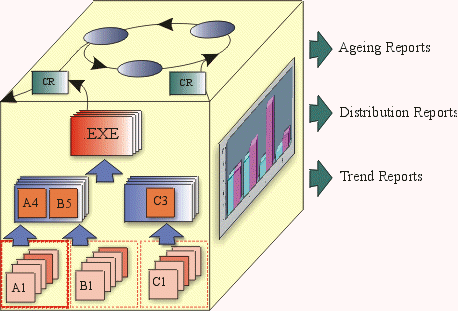| Concept: Configuration Status Reporting |
 |
|
| Related Elements |
|---|
OverviewTracking the progress of a software project is a difficult task. One of the main problems you face is finding a means by which an objective measurement of actual progress and associated status can be assessed. One approach you should consider is tracking the trends in actual change metrics from your change control system: this approach to measuring progress is referred to as configuration status accounting, and the reporting derived from it is often called configuration status reporting. Configuration Status Accounting (Measurement) - is used to describe the "state" of the product based on the type, number, rate and severity of defects found, and fixed, during the course of product development. Metrics derived under this aspect of Configuration Management are useful in determining the overall status of completeness of the project. Four principal sources for software Configuration Status Reports are:
Change RequestsA Change Request (CR) is a general term for a request to change an work product or process. The general process associated with CRs is described in Concept: Change Request Management. The status 'tags' provide the basis for reporting CR (aging, distribution or trend) statistics as described in the CRM process steps. Change Request based defect reports fall under the following categories:
Build ReportsBuild Reports list all the files, their location, and incorporated changes that make up a build for a specific version of the software. Build Reports can be maintained both at the system and subsystem level. Version DescriptionsSimilar to Release Notes, Version Descriptions describe the details of a software release. As a minimum the description needs to include the following:
AuditsThere two kinds of audits that are covered in the context of Configuration Management:
A Physical Configuration Audit (PCA) identifies the elements of a product to be deployed from the Project Repository. A Functional Configuration Audit (FCA) confirms that a baseline meets the requirements targeted for the baseline. The detailed task for performing Audits is described in Perform Configuration Audit. |
© Copyright IBM Corp. 1987, 2006. All Rights Reserved. |
